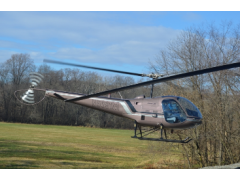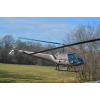FAA License Requirements - Private Pilot (Part 141)
Flight Requirements:
•35 Hours Helicopter Flight Time
•FLYIT! Professional Simulator Flight Training Device (FTD). An FTD can be used to satisfy a maximum of 15% of the total flight training requirements:
- 20 Hours Dual
- 15 Hours Solo
- 35 Hours ground training
- 35 Hours pre/post flight briefing
Remember: Maximum use of the FTD reduces your overall cost. Talk with us for details.
Physical Requirements:
•Eighteen is the minimum age required by the Veterans Administration to obtain a pilot license under Part 141. There is no maximum age limit or restriction.
•Applicants must be in good general health, with eyesight correctable to 20/20 and normal color vision.
•A flight physical is required by an approved F.A.A. doctor before soloing.
Part 141 Ground School Summary:
Class meets weekly - Please call our office for details.
PRINCIPLES OF FLIGHT
•Introduction To The Helicopter
•Aerodynamics
THE FLIGHT ENVIRonMENT
•Safety of Flight
•Airports, Heliports & Airspace
HELICOPTER SYSTEMS & INSTRUMENTS
•Flight Control Systems
•Engines and Related Systems
•Fuel and Electrical Systems
•Powertrain Systems
•Flight Instruments
AVIATION PHYSIOLOGY
•Vision In-Flight
•Spatial Disorientation
•Respiration and Altitude
•Alcohol, Drugs and Performance
FLIGHT PLANNING & DECISION-MAKING
•Planning & Organizing Flights
•Decision-Making
•Cockpit Resource Management
BASIC NAVIGATION
•Aeronautical Charts
•Flight Computers (E6B)
•Pilotage & Dead Reckoning
•Sources of Flight Information
RADIO NAVIGATION
•VOR, ADF, LORAN & GPS
COMMUNICATIONS & PERFORMANCE
•Radio Communications
•Radar and ATC Services
•Predicting Performance
•Weight and Balance
HOVERING OPERATIONS
•Flying into Controlled Airspace
•Proper Radio Use & Practice
•Helicopter Ops at Controlled Airports
PRIMARY MANEUVERS
•Straight and Level Flight
•Climbs, Descents and Turns
•Departures and Approaches
ADVANCED MANEUVERS
•Maximum Performance Takeoff & Climb
•High-Altitude Operations
•Rapid Decelerations & Slope Operations
•Night Operations
EMERGENCY PROCEDURES
•Autorotations
•Emergency Situations
•Systems and Equipment Malfunctions
METEOROLOGY FOR PILOTS
•Basic Weather Theory.
•Weather Patterns
•Weather Hazards
INTERPRETING WEATHER DATA
•Printed Reports and Forecasts
•Graphic Weather Products
•Sources of Weather Information
GROUND OPERATIONS
•Preflight and Starting
•Shutdown Procedures
•Safety Considerations
SPECIAL OPERATIONS
•Confined Area and Pinnacle Operations
•Float Operations





